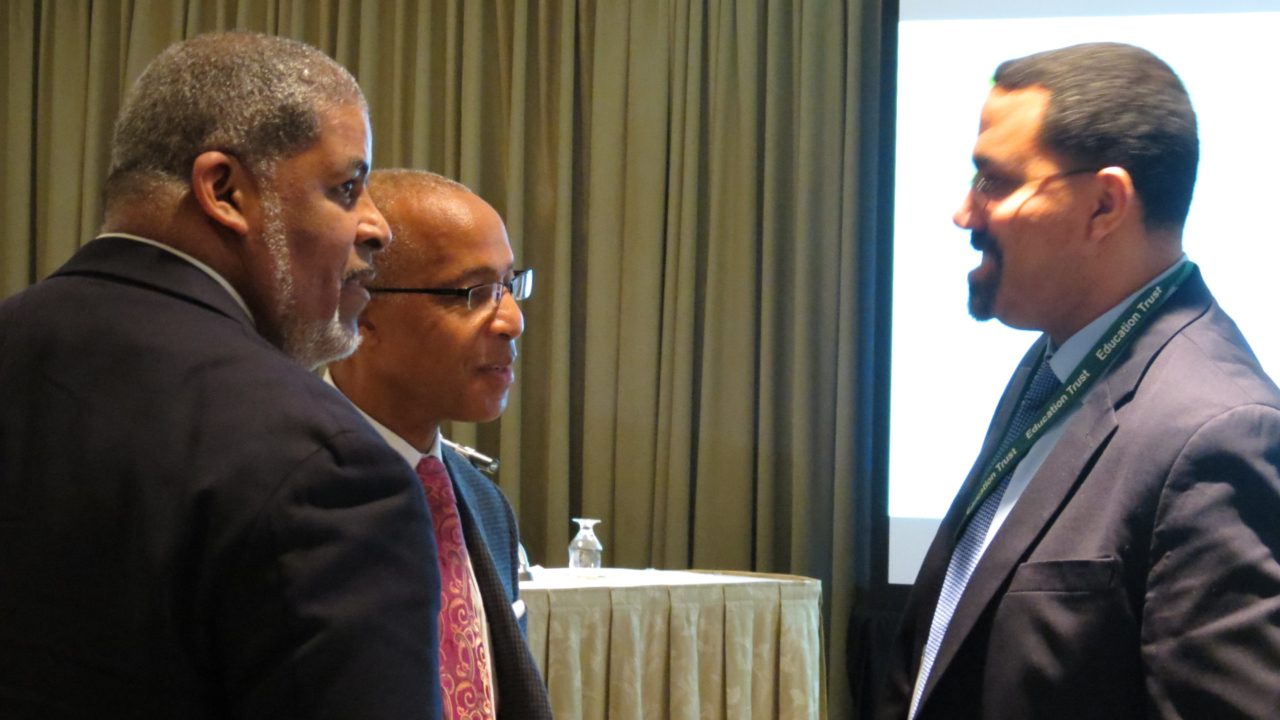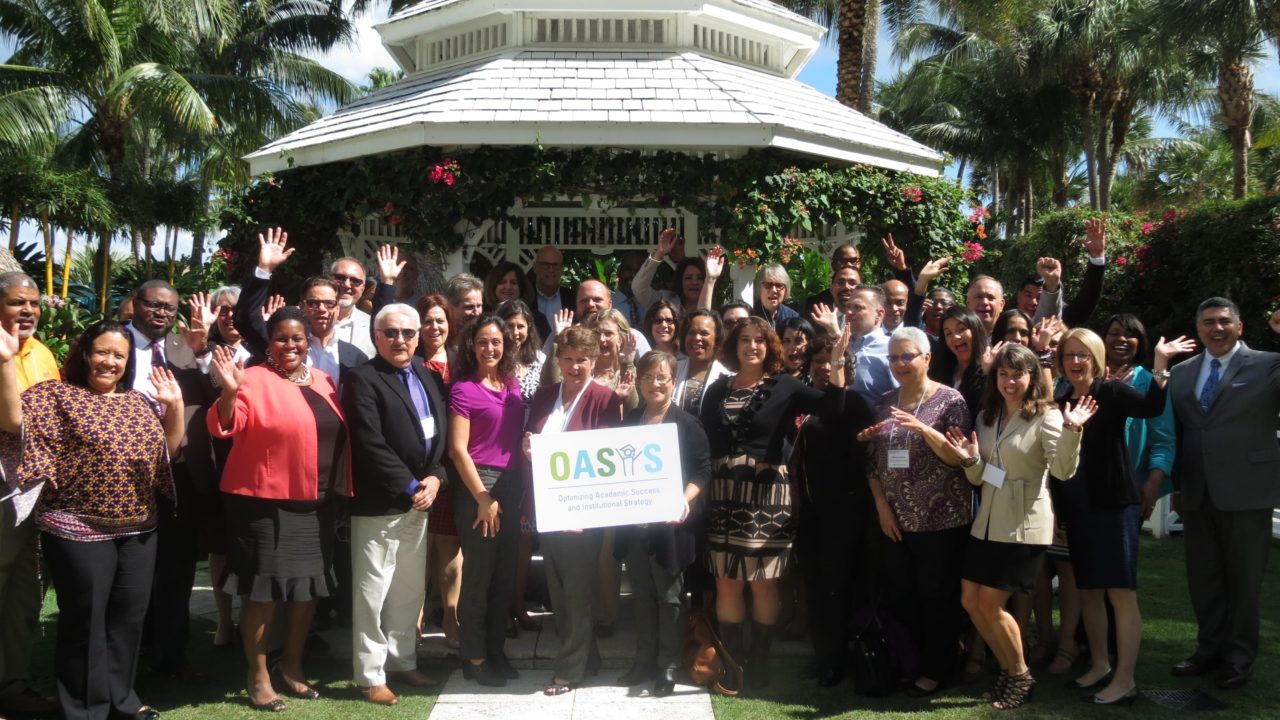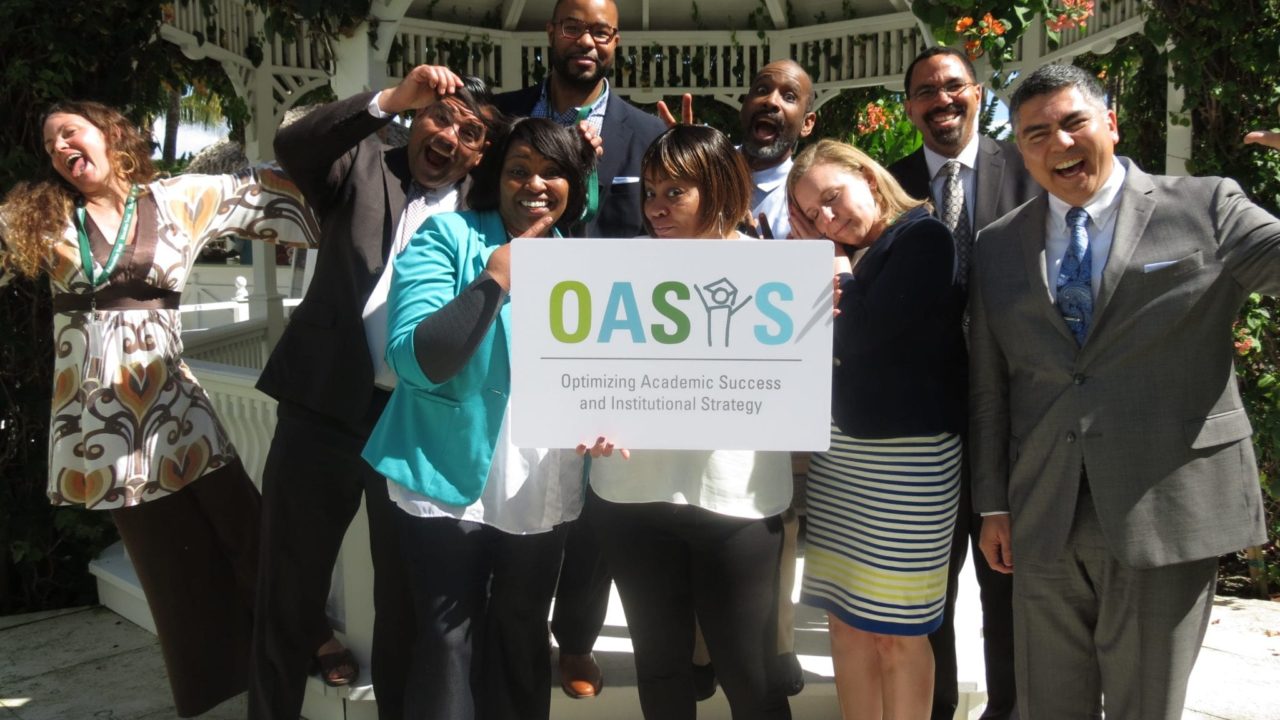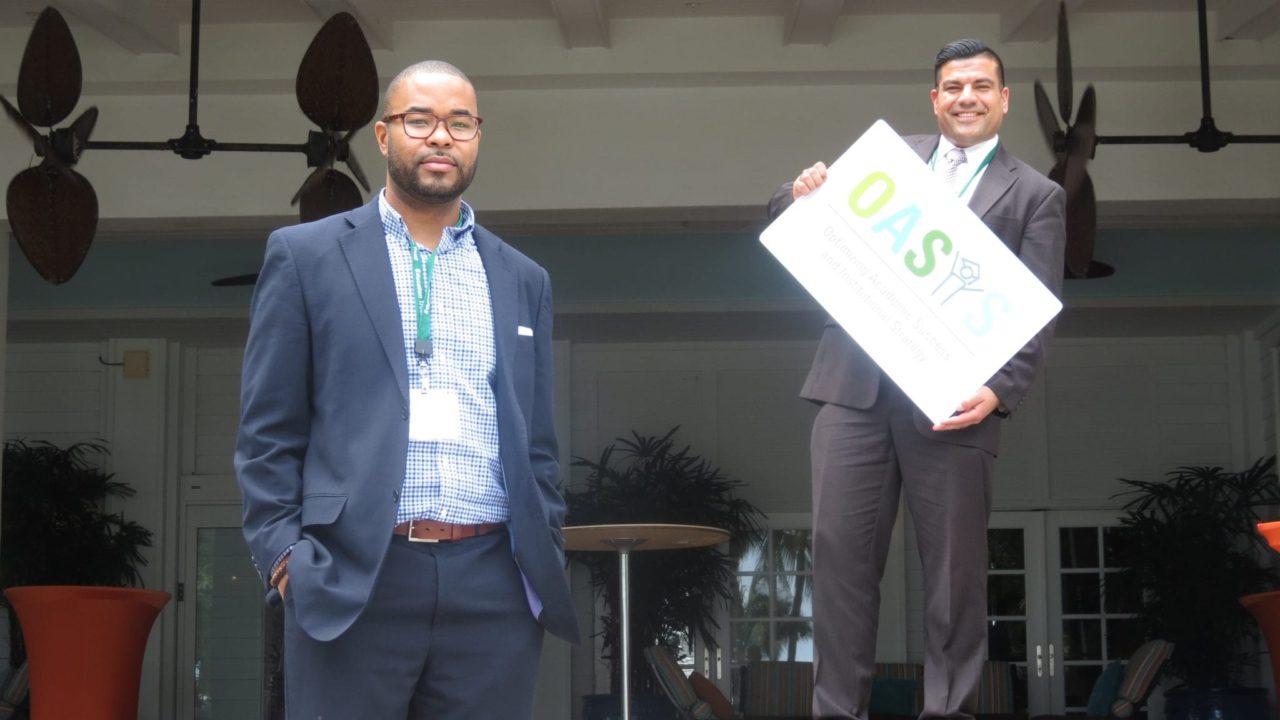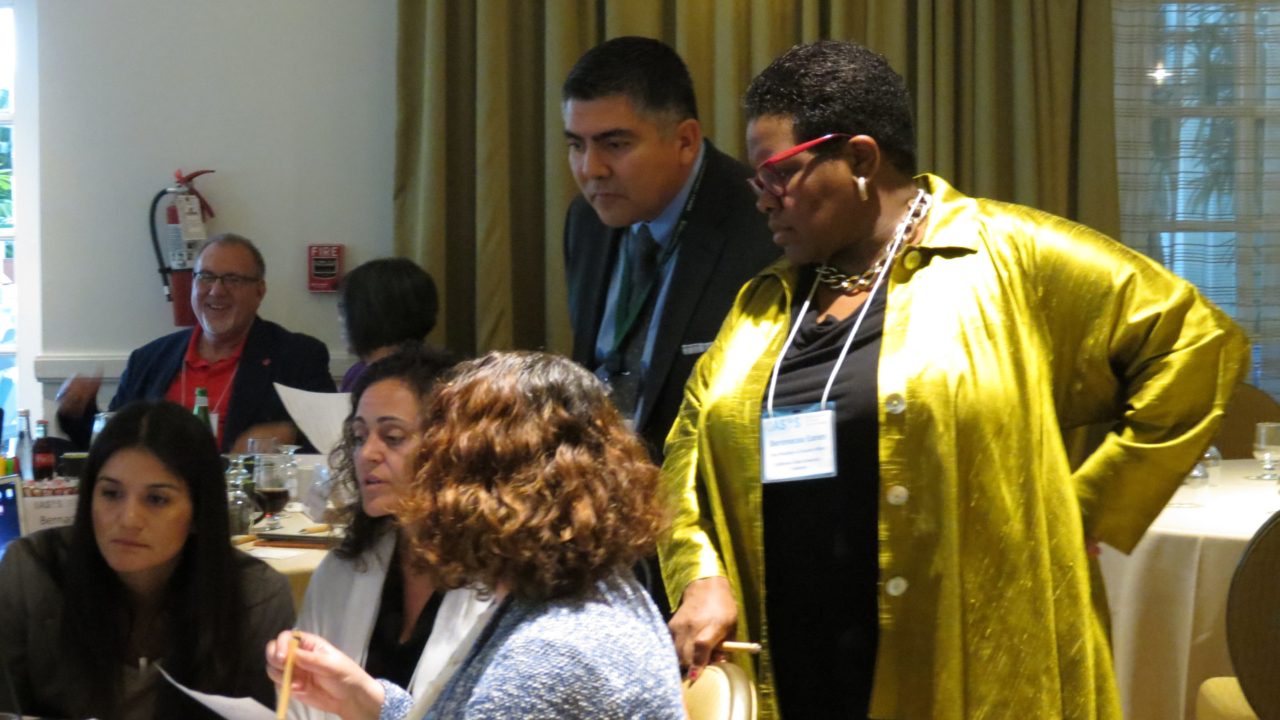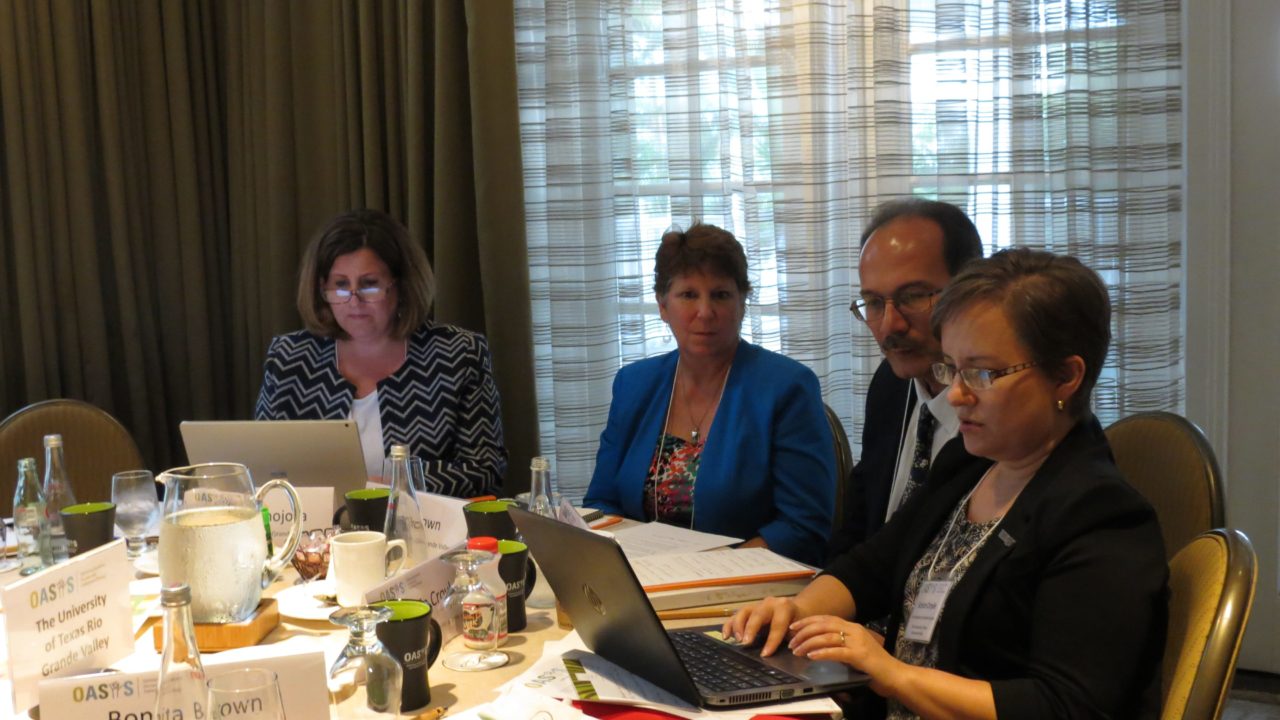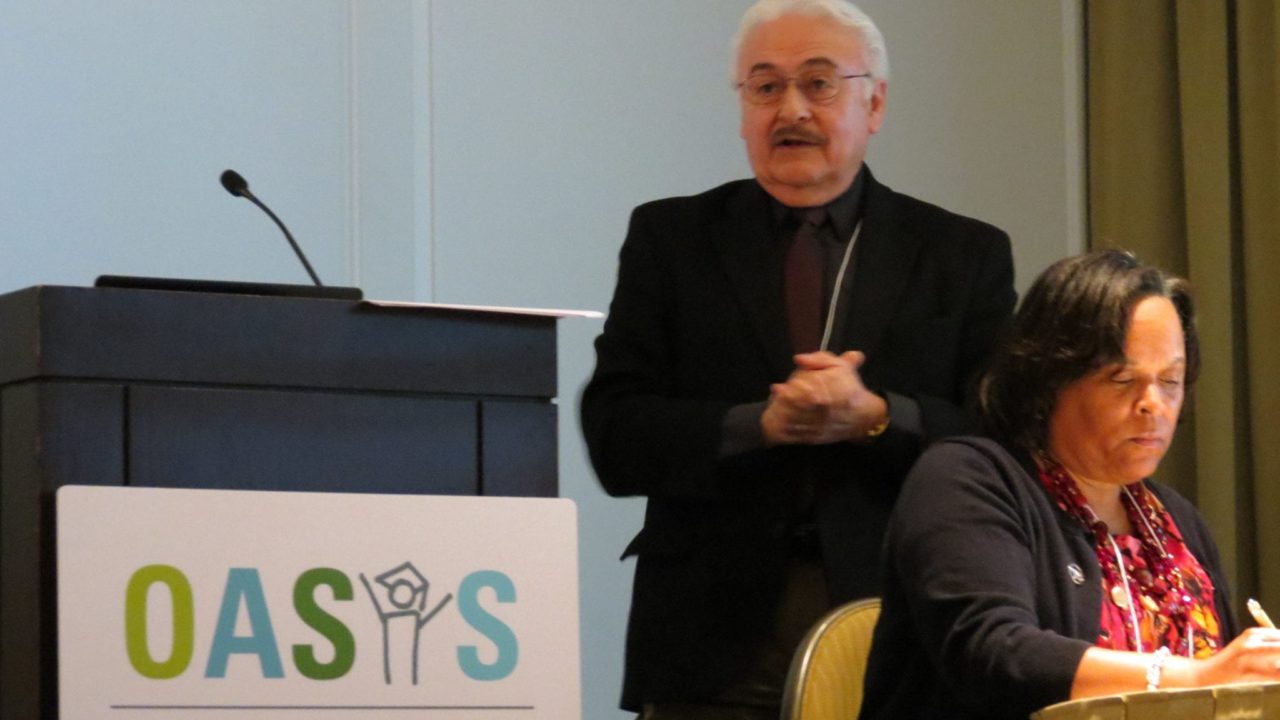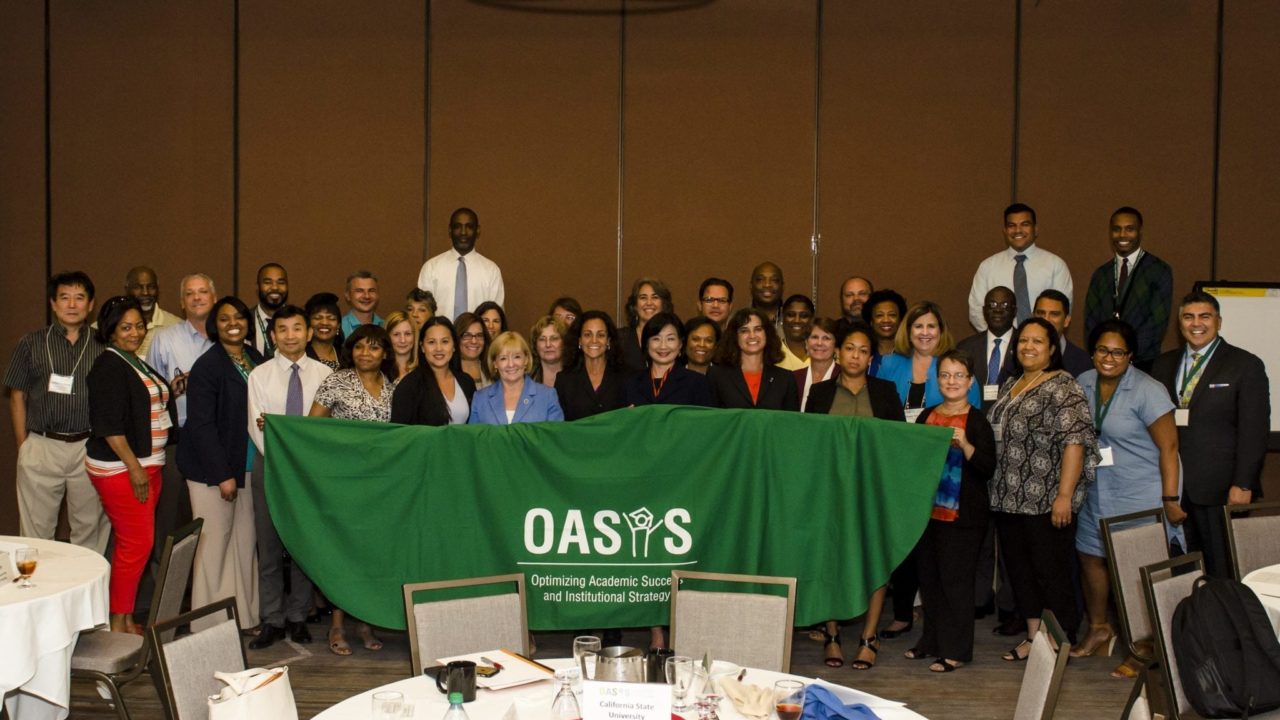
Less than one percent. That’s how much the college graduation rate gap between white and underrepresented minority students (URMs) has closed in the last decade. Among students who begin at four-year institutions, six-year graduation rates for white students are more than 20 points greater than for African American students and 11 points greater than for Latino students.
To help shrink these egregious gaps and to ensure more URM students earn a bachelor’s degree, The Education Trust’s Optimizing Academic Success and Institutional Strategy (OASIS) initiative brings together regional, comprehensive institutions that serve large populations of URMs to collectively achieve the shared goal of improving graduation rates.
The OASIS network enables senior university leaders to work together to analyze each college’s data, share insights with each other and expand the use of evidence-based practices on their campuses. The 2016 network comprises three Historically Black Colleges and Universities (HBCUs), six Hispanic Serving Institutions (HSIs) and one urban research institution serving a large number of URM students.
OASIS institutions come together multiple times to explore best practices in student success in such areas as data analysis, student advising and developmental math interventions. And, over time, they’ll share their experiences and lessons learned with a wider range of institutions.*
*The network is convened by Ed Trust, with support from the Lumina Foundation. It is chaired by Dr. Mildred García, president of California State University, Fullerton.
OASIS Institutions

OASIS
- California State University, Fullerton (HSI)
- Morgan State University (HBCU)
- North Carolina Central University (HBCU)
- The University of Texas Rio Grande Valley(HSI)
- University of Memphis
- California State University, Fresno (HSI)
- Florida International University (HSI)
- North Carolina A&T State University(HBCU)
- Queens College, City University of New York (HSI)
- University of Houston (HSI)

